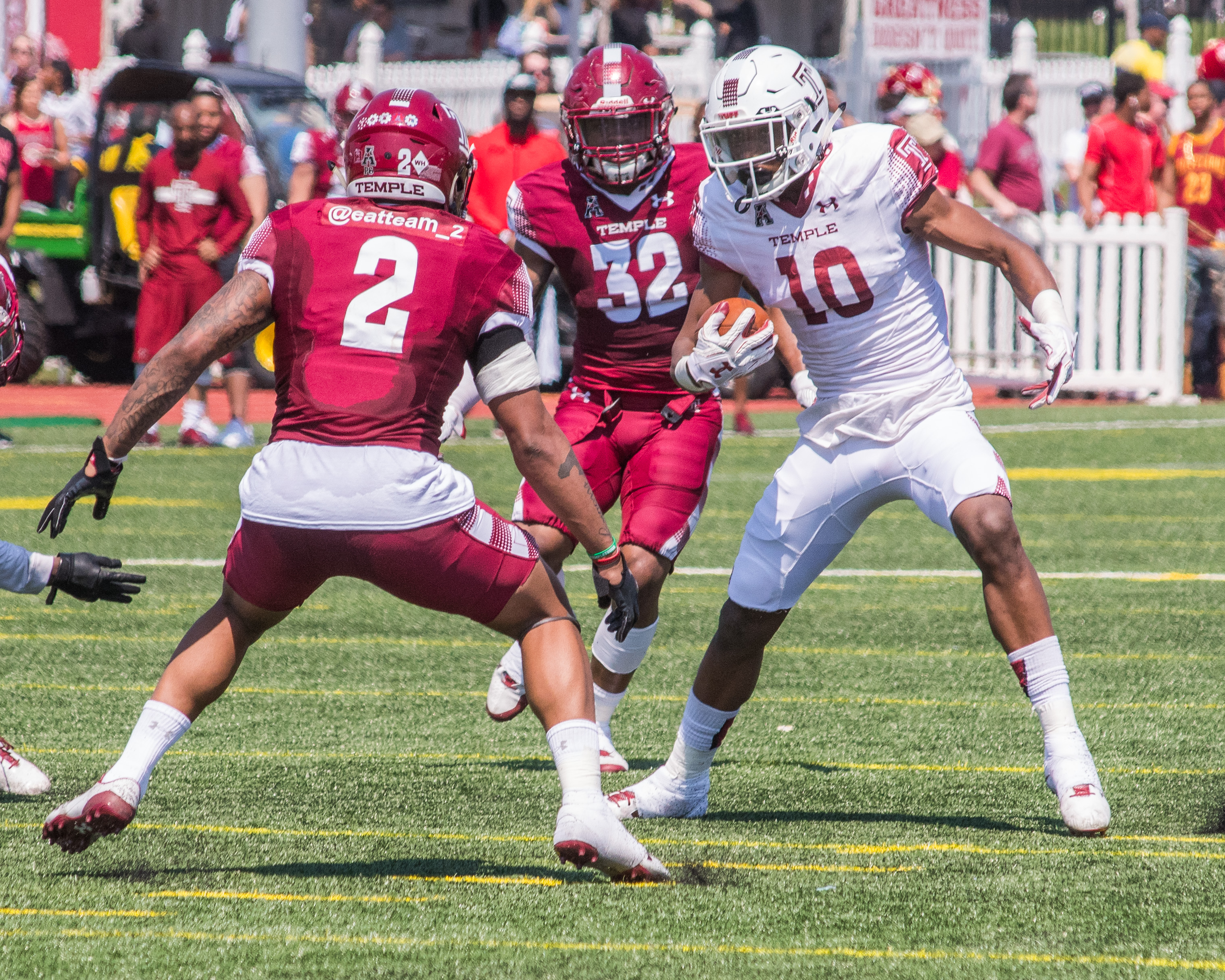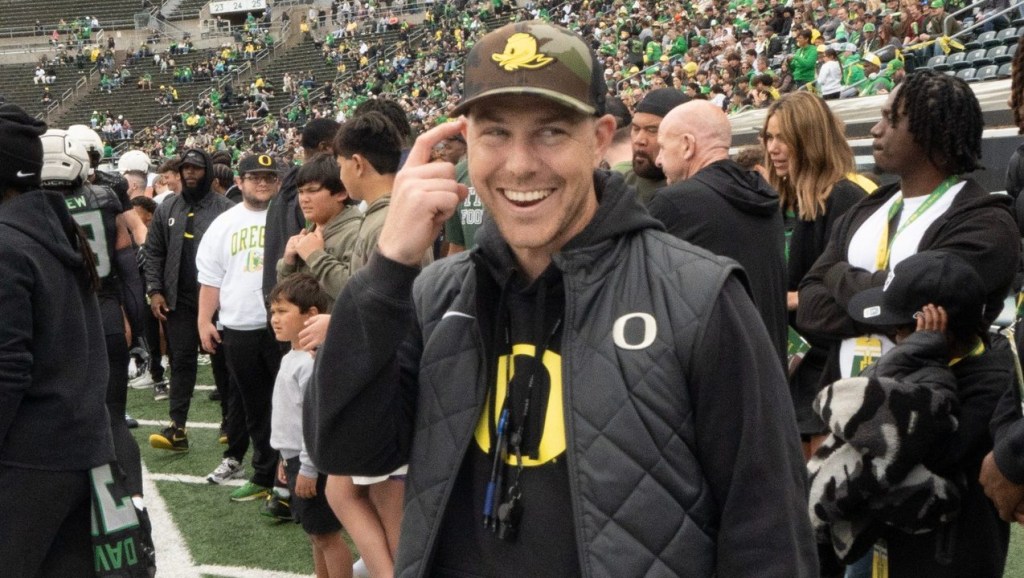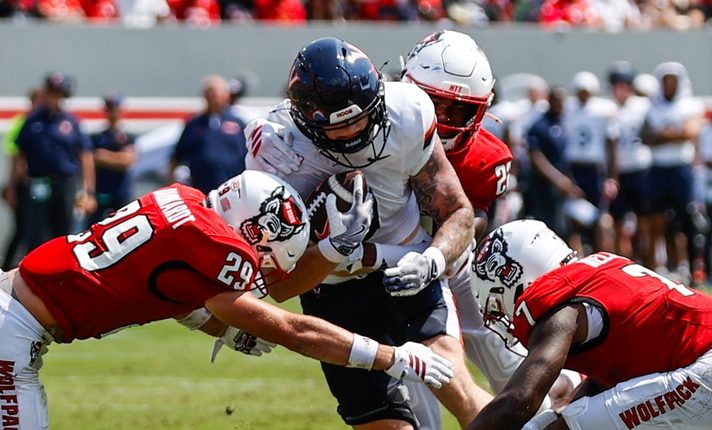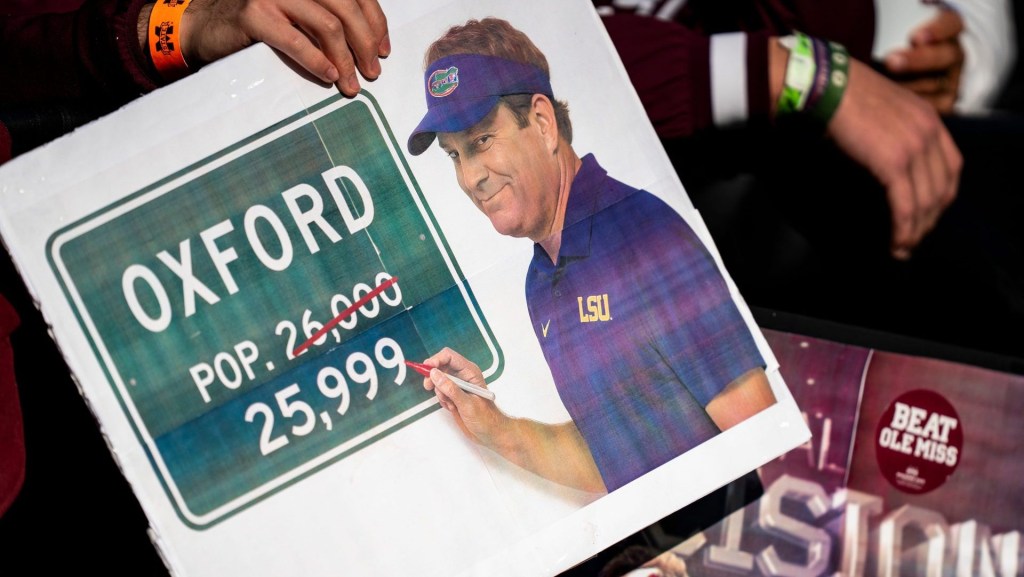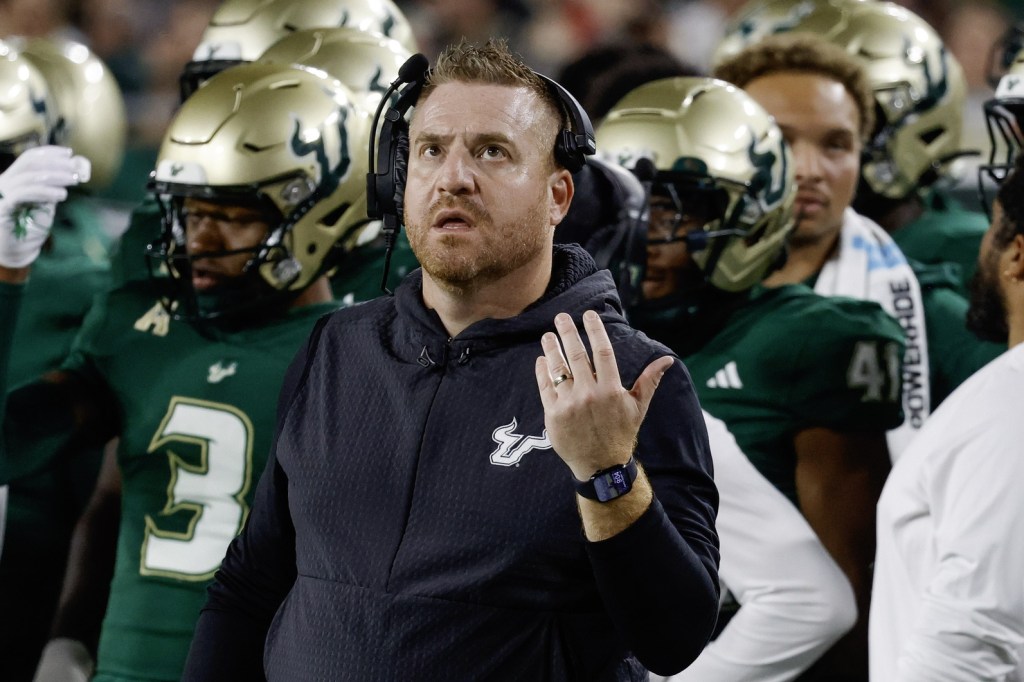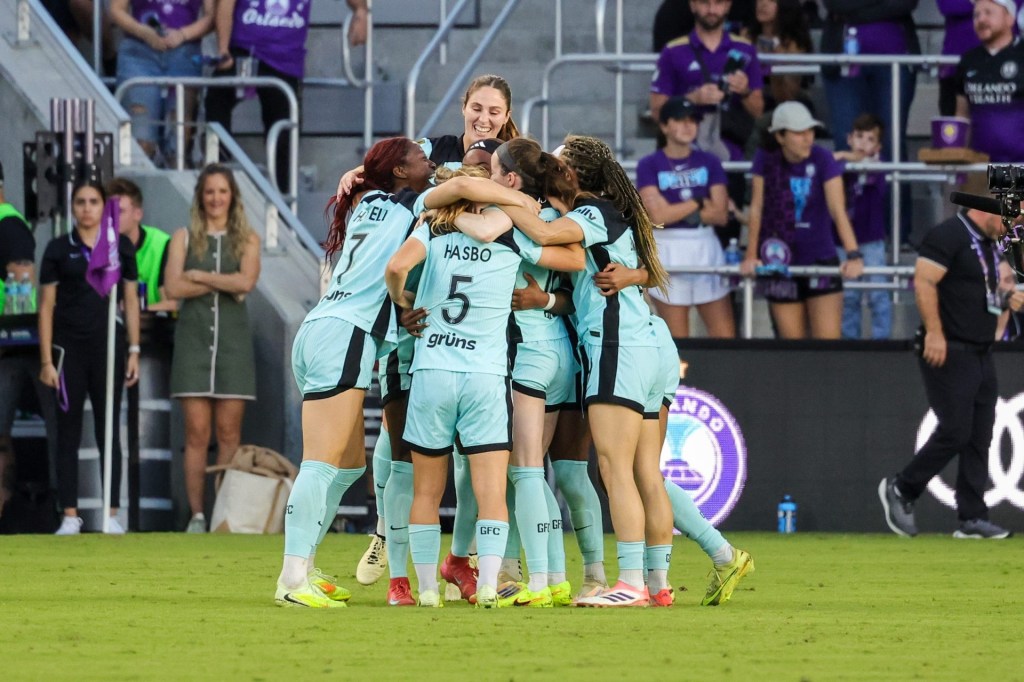
A look at how the handles looked on the jerseys. (Photo via Temple Athletics)
When it comes to social media, there are usually two camps of thought in college athletics. One group tends to have their athletes shy away from social media, and even sometimes restricts them from using it in general. The other, gives their athletes all the tools they need to help them build successful digital brands. Given the decision from the senior leadership at Temple earlier this month it would seem that they fall into the latter.
Thanks to a level of trust built between players, coaches, and administrators, players on the Temple football team were allowed to put their social media handles on their jerseys during the spring game, a decision that resonated well across the board and one that wasn’t given without prior achievement.
In order to be able to have their handle appear on their jersey, the players must have had a 3.0 GPA or better, an idea stemming from Geoff Collins, the head football coach at Temple.
“He (Collins) is very social media savvy and understands the importance of it,” said Morgyn Seigfried, Assistant Athletics Director for Digital Media for Temple Athletics. “The deal was, if you have over a 3.0 GPA, you can put your handle on the back of your uniform for the spring game. What better way to motivate a group of 18-22-year-olds?”
While the idea was to help motivate the players, Seigfried saw it also as an extension to the effort that the athletic department puts into coach their athletes on social media and how to leverage it to help build their brands.
“Our players obviously loved it. It’s a great reward system and it helps us further emphasize why we educate them on social media so extensively. Beyond that, it’s a way for us to show we are investing in our student-athletes as brands and that we value and trust their voices.”
Outside of an extensive social media training program, Seigfried credits having a socially active coach as part of the reason for not only the success of the initiative, but the desire for the athletes to be active and want to participate.
“This is not the first time Coach Collins has allowed the team to embrace their social media accounts. During the season, we have a #GetTheBall board. When you make an interception or force a turnover, you are allowed to sign the board. Most of our players sign with their Twitter handles. Cut to that being captured during a nationally televised game, and next thing you know our starting safety is gaining a ton of followers. There’s a level of trust that has to be there in order for coaches to allow players to do that.”
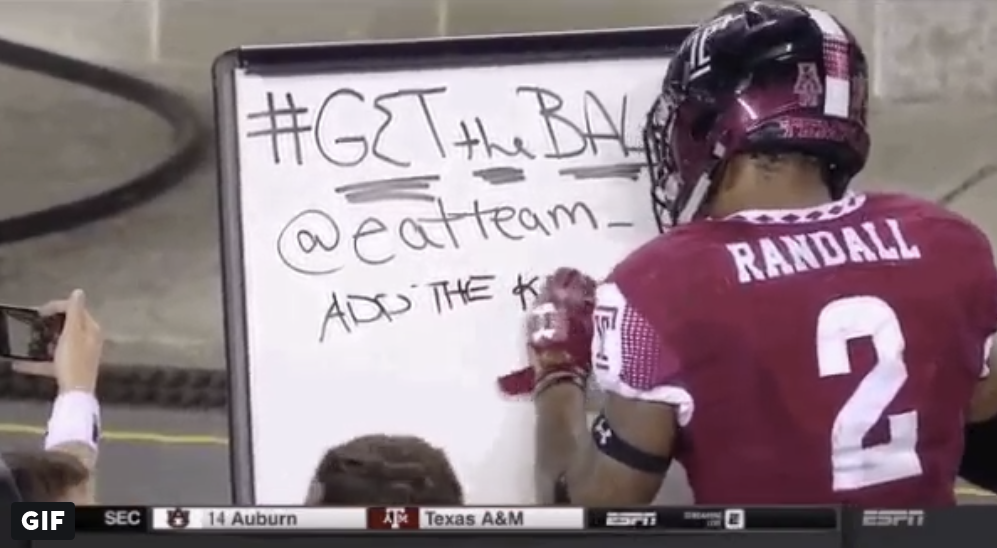
A look at the #GetTheBall board. (Photo via Temple Athletics)
It’s not only a level of trust that Coach Collins shows his players, but the ability to help drive a cohesive message that Seigfried credits to the overall success of Temple’s social presence outside of just having social handles on jerseys.
“Coach Collins/Our football account is also constantly retweeting players. They started a #FillTheLinc campaign. You’ll notice there’s a consistency in the messaging coming out from our football programs accounts, whether it is a player, coach, or staff member. The whole team is embracing social media and using it to have a clear, consistent, strong voice, and beyond that, to connect with our fan base.”
Want more content like this? Subscribe to our daily newsletter!
Although the team may not be able to get away with the initiative during an actual game, Seigfried and the staff felt that the Spring Game was the best opportunity to capitalize on a game that leans more on the relaxed side.
Add that in with a positive sentiment and plenty of media buzz and it becomes something that they would do again.
“We would absolutely do it again. As far as a game goes, I’m not sure I’d go that far, (and I highly doubt the rule books would either!), but it correlates well with a Spring Game. They are supposed to be loose and fun. Putting your twitter handle on the back of a uniform feels very Spring Game-esque, if you will.”
During a time when attendance numbers and new coaches help drive headlines during Spring Game season, Seigfried and her staff were able to capture headlines and the attention of social media users across the country, making for the execution of the initiative as about as organic as they would have hoped.
“We really did not have to do much. The minute we tweeted it, it spread like wildfire. Obviously, all of our imagery showed the handles on the jerseys, which was a really cool touch, but other than that, we let all the news outlets do the talking. It was all very organic.”
For Seigfried and the athletic department, this initiative is just a small piece of the overall digital strategy of the department, a strategy that has embraced the power of social media for its student-athletes.
“I think there is a bigger point to all this. We as college athletic departments have the choice to shy away from our student-athletes’ social media accounts, or embrace them. Here at Temple, we are choosing to embrace, empower, and educate. If we’re mentioning you in a tweet, it’s a privilege. It means there’s a trust there. We don’t want to stifle your voice or your personality. There’s a way to be funny and engaging without being inappropriate. We want to work with our student-athletes to help them develop a voice that will build their brand, resume, and online presence, whether it be for now, or for the future.”
Depending on where your allegiances lie this fall, go ahead and @ Temple, chances are they will embrace it.
